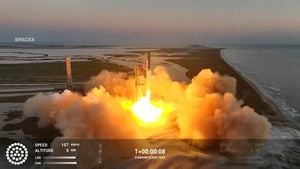The recent ceasefire between Israel and Hezbollah marks a significant moment after more than a year of intense conflict. On November 26, 2024, President Joe Biden declared the cessation of hostilities, which is likely to bring a temporary respite to both sides. The ceasefire was the result of considerable diplomatic efforts primarily led by the United States and France, aiming to quell the bloodshed and restore some semblance of peace to the region.
Since the outbreak of hostilities on October 7, when Hamas launched its unprecedented attack on Israel, the conflict escalated dramatically. Hezbollah, which had initially hesitated to become involved, was drawn in due to regional alliances, significantly intensifying its rocket attacks against northern Israel. The Israeli response was devastating, resulting in heavy losses for Hezbollah, including the deaths of its long-time leader and considerable damage to its military infrastructure.
Although the ceasefire is framed as potentially permanent, it includes provisions for both sides to withdraw from certain strategic areas over the next 60 days. According to the agreement, Hezbollah's forces are required to retreat north of the Litani River, which demarcates some of the contested territories. Meanwhile, the Israel Defense Forces (IDF) are expected to gradually withdraw their troops from southern Lebanon.
The initial reaction to the ceasefire has been cautious on both sides. While the truce aims to halt the fighting, reports have indicated violations from both Israel and Hezbollah shortly after it took effect. Israel accused Hezbollah of maintaining military activity even as Lebanese media reported the return of civilians to recently contested areas, contrary to ceasefire terms.
The ceasefire's success is under scrutiny, and both Israeli Prime Minister Benjamin Netanyahu and various Lebanese officials have expressed skepticism about its durability and long-term impact. Netanyahu warned of potential rapid shifts should Hezbollah fail to adhere to the agreement, indicating readiness for 'intensive war' if significant violations occur. He emphasized the ceasefire could be short-lived if provocations persist, hinting at Israel's resolve to defend its territories comprehensively.
On the Lebanese side, the approval of the ceasefire has led to mixed feelings. Many displaced Lebanese have begun returning to their homes, but the IDF has issued warnings urging residents to avoid areas deemed dangerous. The ceasefire has not resolved the underlying tensions; instead, it might set the stage for renewed hostilities should either side perceive sustained threats from the other.
What complicates these dynamics is the broader regional backdrop, particularly relating to Iran’s involvement. While Iranian officials have framed the ceasefire as a victory for Hezbollah, there are factions within Iranian politics questioning the ceasefire’s impact on regional security. Some Iranian conservatives worry the truce could enable Israel to consolidate its position against Iran and its allies, particularly as Israel pivots to address its conflict with Hamas and bolster defenses around Gaza.
The ceasefire agreement includes oversight by various international stakeholders, including the United States and France, as well as the United Nations peacekeeping forces. This multinational monitoring group is tasked with ensuring both sides comply with the stipulated terms of withdrawal and maintaining peace along the border.
Despite the ceasefire, reports from both sides suggest initial violations indicate skepticism about the truce's longevity. While both Israel and Hezbollah express cautious optimism, the groundwork for lasting peace remains precarious. The underlying issues concerning territorial disputes, military presence, and regional alliances have not dissipated and must be addressed if the ceasefire is to transform from temporary relief to lasting peace.
It is also worth noting the humanitarian impact of the long conflict. Over one million Lebanese have been displaced, and thousands of Israelis have also seen their lives turned upside down due to missile threats and subsequent military operations. The significant loss of life and property destruction presents urgent challenges for recovery efforts and potential reconciliation once hostilities cease.
The road to rebuilding trust and ensuring future stability is fraught with difficulties. It requires meaningful dialogue, respect for territorial integrity, and adherence to international norms. The ceasefire is simply one step—albeit, significant—toward addressing the multitude of complex issues facing both Israel and Lebanon.
When placed alongside the broader geopolitical situation surrounding the Middle East, the ceasefire doesn't necessarily guarantee peace but highlights urgent need for sustained diplomatic engagement. Both sides' reactions remain tempered, and the situation warrants close monitoring as the ripple effects of this ceasefire across regional alliances could significantly reshape future interactions, not just between Israel and Hezbollah, but throughout the Middle East.
Negotiations must continue, emphasizing not only military withdrawals and ceasefire terms but also addressing underlying grievances and fostering socio-economic resiliency within the affected populations. The hope is to transform this ceasefire from the fragile truce it currently stands as, to the foundation upon which trust and cooperation can be built, steering the region away from future conflicts.



